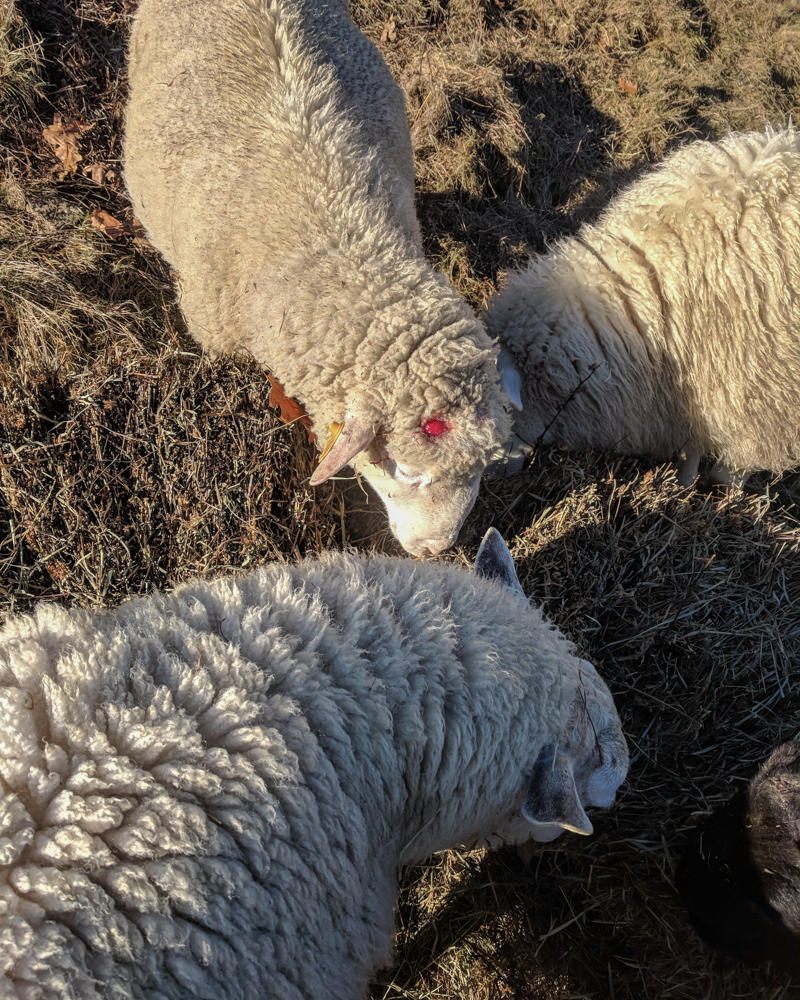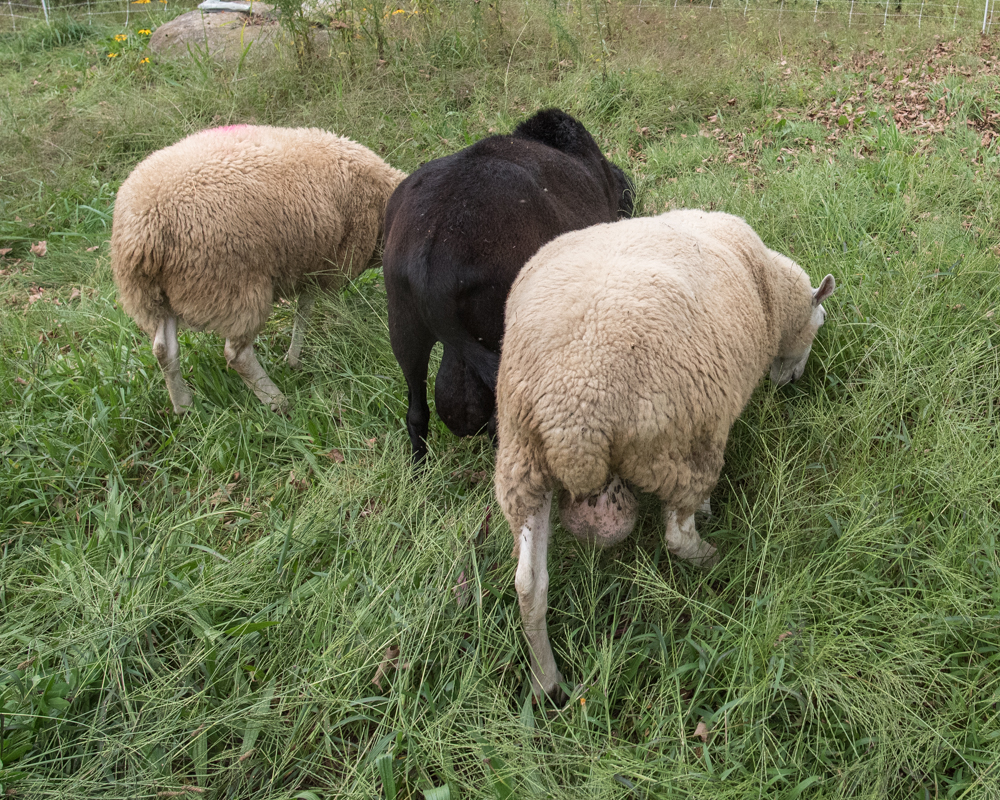When I brought hay and water to the rams today, I noticed that the dorset (the one who doesn’t want to grow) was looking a little banged up.

My first assumption was that Angus, the big black Katahdin ram, had beaten him up, but there were no corresponding marks on Angus’s head, and the wound didn’t exactly match what I would expect from head-butting. The dorset’s dinger was on his right scur (the vestigial stub of a horn), while battling rams usually damage each other on the tops of their skulls.
I followed my usual pattern with sheep-related conundra and checked in with Bill, who reported that a ram with scurs has many ways to injure himself: getting the hornlet caught on the fence and ripping it off; developing the equivalent of a hangnail at the base of the horn, snagging it on someone else’s wool, and ripping it off; and half a dozen other scenarios that he couldn’t remember at that moment.
Rams always strike me as ridiculous creatures, with their outrageously pendulous scrotums

and their propensity to break one another’s necks, and this incident — though not strictly due to the dorset’s maleness — reinforced my dismay. I commented to Bill that I was grateful not to be a ram, given all of these seemingly maladaptive traits, and he replied that if I were a ram, the traits wouldn’t bother me so much. I’m not sure if spending time with sheep necessarily induces a philosophical state of mind — it often does for me — but I immediately thought of Thomas Nagel’s famous 1974 essay about consciousness, “What Is It Like to Be a Bat?”, and whether an updated version involving rams might be in the offing. Nagel concludes that consciousness is subjective and contingent, essentially that without the giant testes there’s no way to completely understand the rest of ramness. I think he’s probably right.
Tagged: bats, blood, consciousness, Daniel Dennett, fighting, injury, pendulous, ram, scrotum, scur, testes, Thomas Nagel